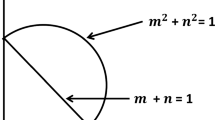Abstract
A new on-line fuzzy clustering-based algorithm is developed using integration of an adaptive principal component analysis approach with a weighted fuzzy C-means (WFCM) methodology for process fault detection and diagnosis (FDD) applications. The proposed algorithm is based on the segmentation of measured multivariate time series process data through a sliding window scheme being realized in a bottom-up cluster merging approach to enable detection of probable changes embedded in their hidden structure. The method recursively maintain updated PCA models and their corresponding fuzzy membership functions based on the most recent arrival of each independent chunk of process data. The extracted chunk features are then retained in the memory to be merged using a new on-line fuzzy C-means methodology before incoming of the following chunks of data. A new formula is then presented for cluster merging improvement by incorporating an on-line weight to address the issue of cluster’s weight updating in the on-line WFCM methodology. The cluster merging mechanism is coordinated by a compatibility criterion, utilizing both similarities of the adapted clusters-based PCA models and their center closeness. The proposed algorithm has been evaluated on an artificial case study and Tennessee Eastman benchmark process plant. The observed performances demonstrate promising capabilities of the proposed algorithm to successfully detect and diagnose the introduced fault scenarios.




















Similar content being viewed by others
References
Abonyi J, Feil B, Nemeth S, Arva P (2003) Fuzzy clustering based segmentation of time-series
Abonyi J, Feil B, Nemeth S, Arva P (2004) Principal component analysis based time series segmentation: a new sensor fusion algorithm, preprint
Abonyi J, Feil B, Nemeth S, Arva P (2005) Modified Gath–Geva clustering for fuzzy segmentation of multivariate time-series. Fuzzy Sets Syst 149:39–56
Agarwal CC, Han J, Wang J, Yu PS (2003) A framework for clustering evolving data streams. In: Proceedings of VLDB
Angeli C, Atherton D (2001) A model-based method for an online diagnostic knowledge-based system. Expert Syst 18(3):150–158. ISSN 0266-4720
Babuska R, van der Veen PJ, Kaymak U (2002) Improved covariance estimation for Gustafson-Kessel clustering. In: IEEE international conference on fuzzy systems, pp 1081–1085
Bahrampour S, Moshiri B, Salahshoor K (2011) Weighted and constrained possibilistic C-means clustering for online fault detection and isolation. Applied Intell 35(2):269–284
Beringer J, Hullermeier E (2006) Online clustering of parallel data streams. Data Knowl Eng 58(2):180–204
Chen G, McAvoy TJ (1998) Predictive on-line monitoring of continuous processes. J Process Control 8:409
Chen J, Liao C (2002) Dynamic process fault monitoring based on neural network and PCA. J Process Control 12:277–289
Chiang LH, Russell EL, Braatz RD (2000) Fault diagnosis in chemical processes using Fisher discriminant analysis, discriminant partial least squares, and principal component analysis. Chemom Intell Lab Syst 50:243–252
Collaghan LO, Mishra N, Meyerson A (2002) Streming-data algorithms for high-quality clustering. In: Proceedings of IEEE international conference on data engineering
Gallagher VB, Wise RM, Butler SW, White DD, Barna GG (1997) Development and benchmarking of multivariate statistical process control tools for a semiconductor etch process; improving robustness through model updating. In: Proceedings of ADCHEM 97, Ban, Canada, pp 78–83
Hore P, Hall LO, Goldgof DB (2008) Online fuzzy c means. IEEE, ISBN: 978-1-4244-2325
Huang Y, Gertler J, McAvoy TJ (2000) Sensor and actuator fault isolation by structured partial PCA with nonlinear extensions. J Process Control 10:459–469
Isermann R (2005a) Model-based fault detection and diagnosis—status and application
Isermann R (2005b) Fault diagnosis systems. An introduction from fault detection to fault tolerance
Jackson JE (1991) A users guide to principal components. Wiely, New York
Kano M, Hasebe S, Hashimoto I, Ohno H (2001) A new multivariate statistical process monitoring method using principal component analysis. Comput Chem Eng 25:1103–1113
Kaymak U, Babuska R (1995) Compatible cluster merging for fuzzy modeling. In: Proceedings of the IEEE international conference on fuzzy systems, Yokohama, Japan, pp 897–904
Kelly PM (1994) An algorithm for merging hyperllipsoidal clusters. Technical Report LA-UR-94-3306
Kourti T (2002) Process analysis and abnormal situation detection: from theory to practice. IEEE Control Syst Mag 22(10):10–25
Krzanowsky WJ (1979) Between group comparison of principal components. J Am Stat Assoc
Laffey TJ, Cox PA, Schmidt JL, Kao SM, Read JY (1988) Real-time knowledge-based systems. AI Mag 9(1):27–45
Li W, Yue HH, Valle-Cervantes S, Qin SJ (2000) Recursive PCA for adaptive process monitoring. J Process Control 10:471–486
Malinowski ER (1991) Factor analysis in chemistry. Wiley, New York
Martinez WL, Martinez AR (2005) Exploratory data analysis with Matlab. Computer science and data analysis series. Chapman and Hall, London. ISBN 1-58488-366-9
Mauricio Sales Cruz A (2004) Tennessee Eastman Plant-wide Industrial Process. Challenge Problem
Palade V, Patton RJ, Uppal FJ, Quevedo J, Daley S (2002) Fault diagnosis of an industrial gaz turbine using neuro-fuzzy methods. IFAC World Congress, IFAC’02, Barcelona
Salahshoor K, Kordestani M (2009) Design of on-line soft sensors based on combined adaptive PCA and DMLP neural networks. Computational intelligence in control and automation, CICA 2009, IEEE Symposium, pp 3481–3486
Seborg D (2012) A perspective on advance strategies for process control. In: Frank P (ed) Advances in control. Highlights of ECC’99 (revised)
Wise BM, Ricker NL, Veltkamp DF, Kowalski BR (1990) A theoretical basis for the use of principal component models for monitoring multivariate processes. Process Control Qual 1:41–51
Widodo A, Yang BS (2007) Support vector machine in machine condition monitoring and fault diagnosis. Mech Syst Fault Diagn 21:2560–2574
Wold S (1994) Exponentially weighted moving principal component analysis and projection to latent structures. Chemom Intell Lab Syst 23:149–161
Yang Q (2004) Model-based and data driven fault diagnosis methods with applications to process monitoring
Author information
Authors and Affiliations
Corresponding author
Rights and permissions
About this article
Cite this article
Alaei, H.K., Salahshoor, K. & Alaei, H.K. A new integrated on-line fuzzy clustering and segmentation methodology with adaptive PCA approach for process monitoring and fault detection and diagnosis. Soft Comput 17, 345–362 (2013). https://doi.org/10.1007/s00500-012-0910-9
Published:
Issue Date:
DOI: https://doi.org/10.1007/s00500-012-0910-9




